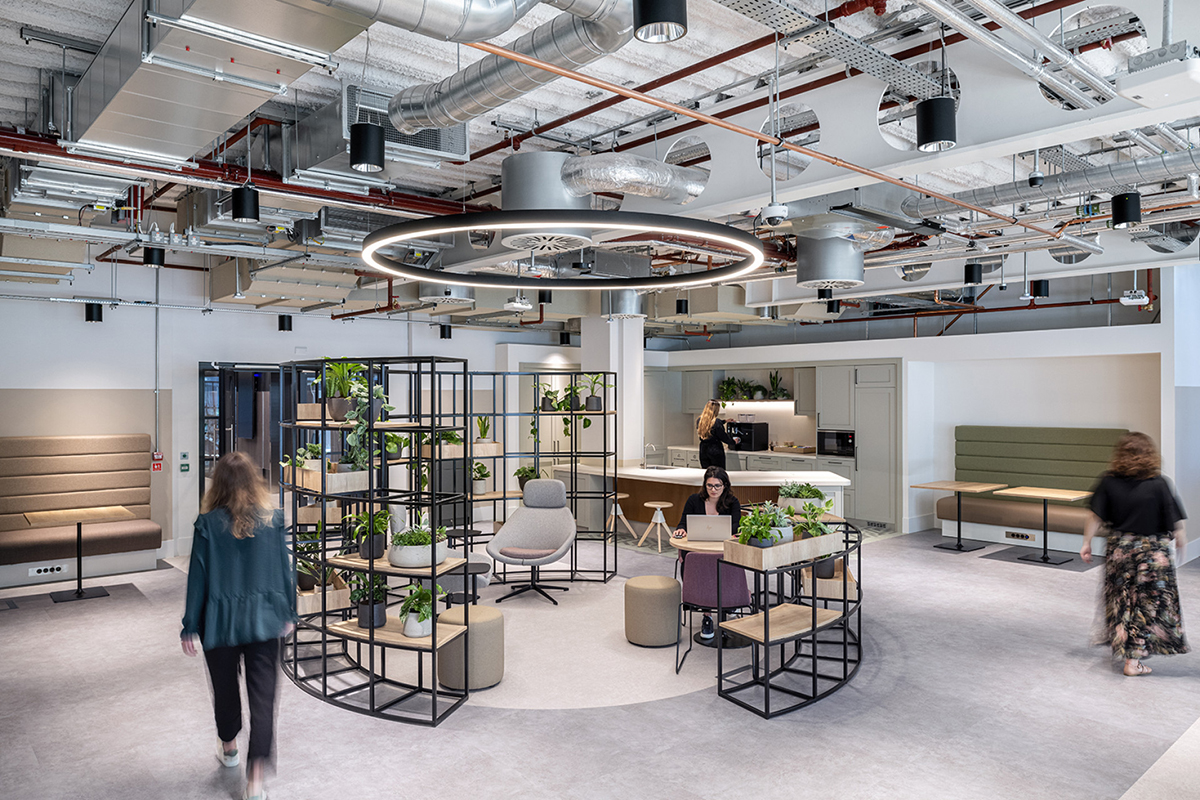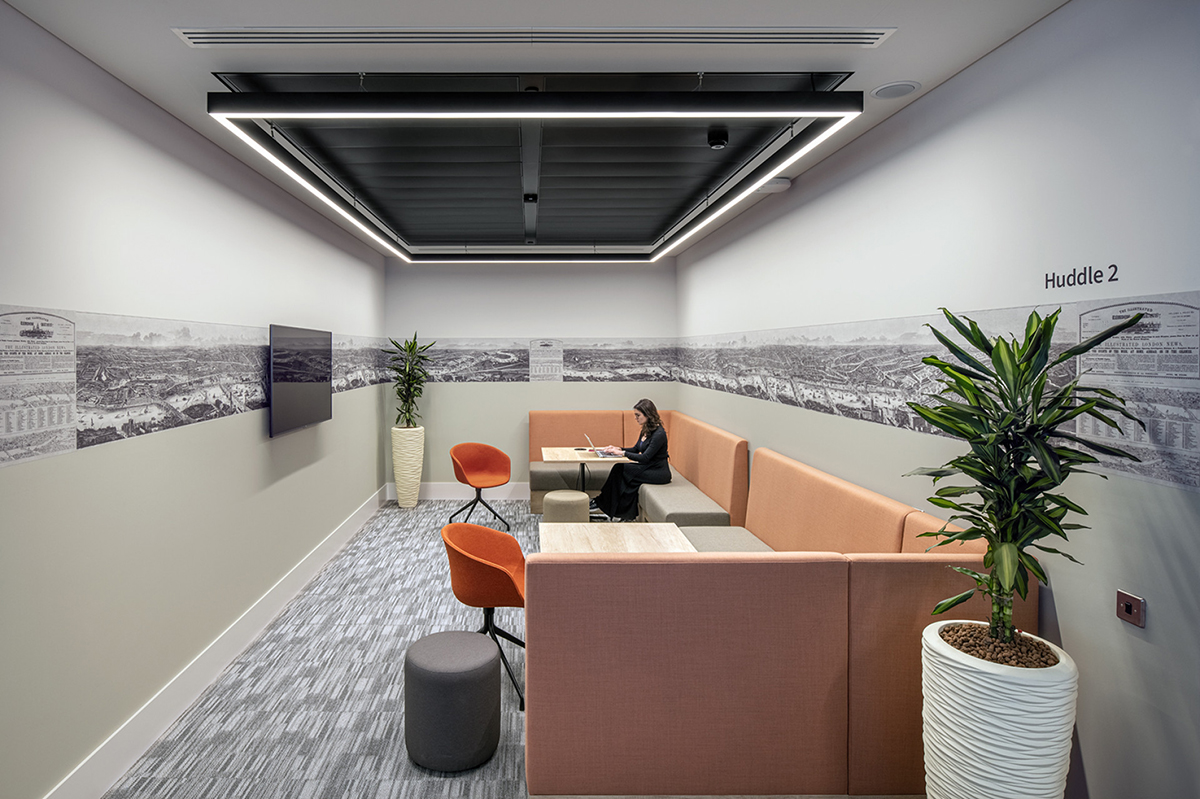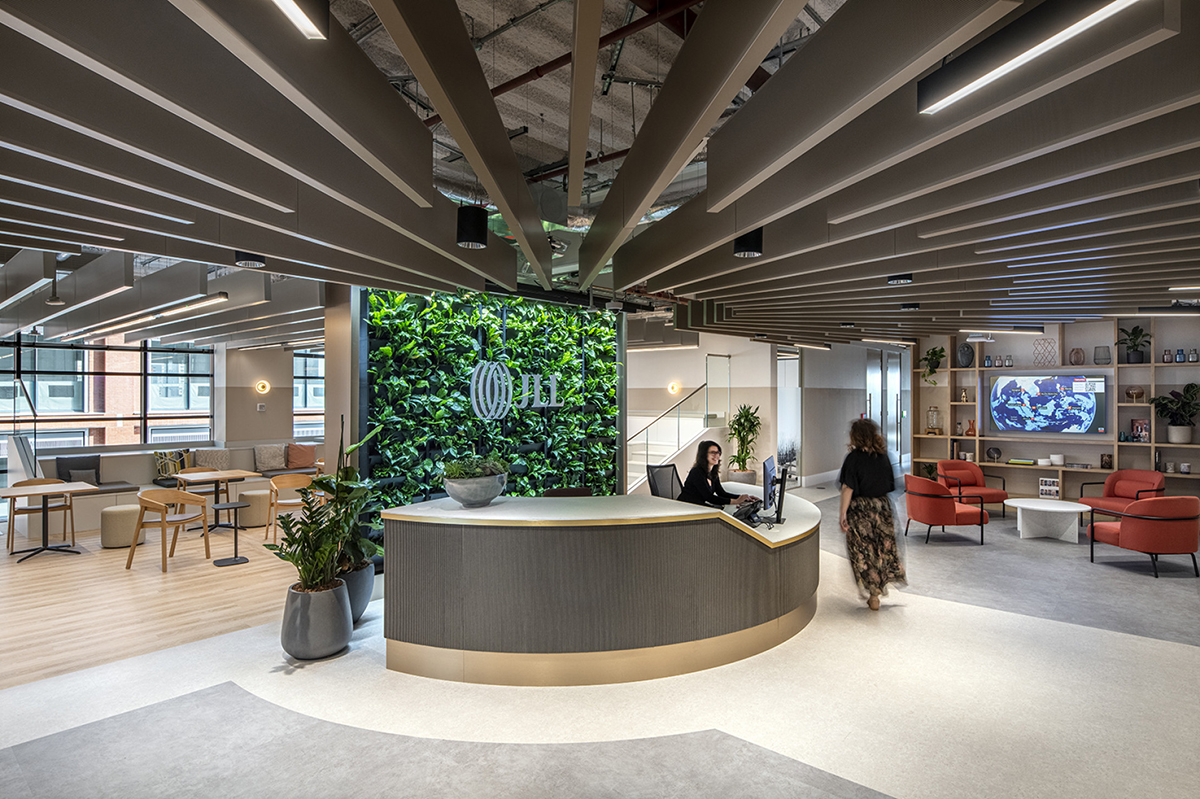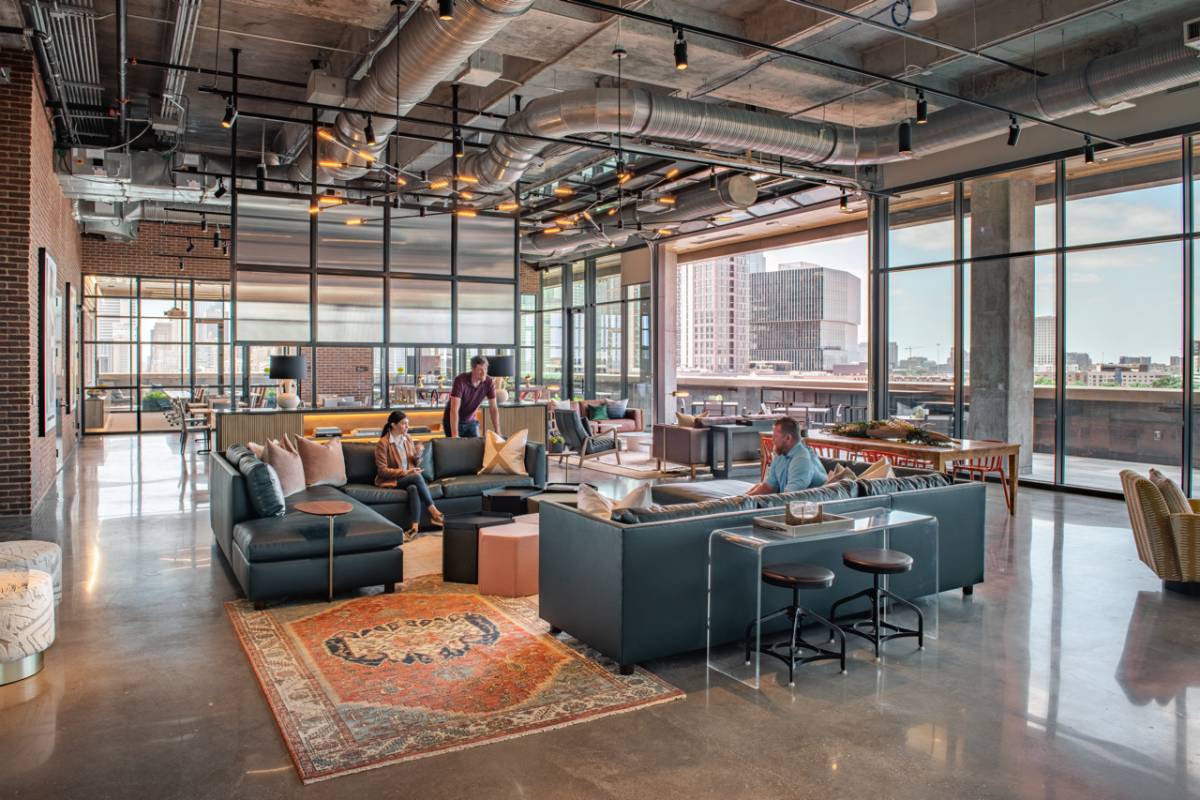What Corporate America’s New Office Looks Like
When it comes to the future of office, everyone’s touting flexibility. But what does it actually take?
It’s been three arduous years for the office sector in an environment shaped by the long-lasting effects stemming from COVID-19. The industry is still dealing with a major sea change when it comes to office design that the pandemic only accelerated.

JLL’s Water Street office in London features some of the design and space-use concepts used for its clients. Image courtesy of Jonathan Banks
The pre-2019 large floor plates filled with a sea of cubicles have largely fallen out of favor with corporate tenants. Instead, more open spaces are gaining ground, emphasizing collaborative areas as a means to get employees back in person.
READ ALSO: The CRE Workforce of the Future
There’s no one-size-fits-all solution, but flexibility is a common denominator among corporate tenants interested in a “return to office.” The flexibility applies to how workspaces are designed but also to how leases are negotiated. There’s still plenty of uncertainty around the sector but adjusting to new models requires adaptability and creativity, experts say.
More collaboration, socialization
With hybrid models largely becoming the norm, employees are mostly getting heads-down and focused work done remotely. This leaves most workers with fewer reasons to return to the office, and headquarters with empty workstations. However, many corporate users are instead leaning into office design that promotes collaboration and socialization, giving employees an experience that cannot be replicated at home or through virtual meetings.
“There’s a certain amount of productivity you can get from being at home when you have heads-down deep work,” Jessica Pernicone, principal at JLL who leads the Solutions Development division, said. “However, if that’s not what your job requires all the time, there are feelings of isolation and people start to feel disconnected from their colleagues.

JLL 20 Water Street Office London. Image courtesy of Jonathan Banks
“Human contact in the office space, collaboration and socialization are the top reasons why people are going into offices,” Pernicone added.
Design experts have been seeing clients leave behind cubicles and designated workspaces and incorporate more open collaborative spaces. These areas can be small or large tech-enabled conference rooms, open-area workspaces with no assigned seating, or shared desk areas.
READ ALSO: Inside LA’s $300M Experiential Office
“Traditional conference room utilization is way down but brainstorming and more collaborative conference spaces is way up,” noted Lenny Beaudoin, executive managing director & global head of Workplace & Design at CBRE.
Beaudoin said that corporate tenants are no longer interested in dedicated private offices for people who are rarely in and would rather utilize that space for shared focus areas and more accessible workspaces. Pernicone added that JLL’s clients are also using the office as a place to reinforce company culture, while driving collaboration and innovation.
“It’s really about the ‘we space’ and not the ‘me space,’” Pernicone concluded.

JLL’s Water Street office in London features some of the design and space-use concepts used for its clients. Image courtesy of Jonathan Banks
Flexible spaces, lease terms
Along with evolving physical space demands, corporate tenants are looking for more flexible lease terms during a period of growing pains. The lasting uncertainty surrounding the office sector has led corporate users to be more cautious when negotiating leases.
“Ten-year leases may be a dying breed but it’s not just about shorter terms when we think about flexibility with leasing,” said Whitney Burns, vice president of Management Services, Experience Management & Client Strategy at Hines. “It’s about optionality with the lease term—expansion, contraction, and termination—, flexibility with parking, what types of fees would be associated should we have another intense lockdown.”
The office sector is certainly in a much better state with regards to handling COVID-19 risks nowadays, but there’s still an air of uncertainty that has made corporate users much more risk-averse. This uncertainty has caused far more flexible demands when it comes to negotiating leases.
“With increased uncertainty about what corporate tenants’ demand and usage patterns may look like through time, users of space are trying to manage risk and get it right,” Rick Bertasi, CEO of Global Corporate Services for Newmark, told Commercial Property Executive on how corporate clients navigate leases. “Hence, corporate tenants are either looking to make more cautious or more flexible commitments in order to be able to pivot if needed.”
Burns also noted that space utilization is changing, so companies may not be increasing their footprint as much as they used to. For example, one of Hines’ clients hired 1,000 more employees in the last two years but hasn’t increased its footprint.
“Traditionally, that would’ve required a lot more space, but because space utilization is changing, they’re not increasing their footprint in correlation with hiring the same way some companies used to, but they’re also not getting rid of that square footage,” Burns added.
Antonia Cardone, executive director at Cushman & Wakefield, who’s also the Americas lead for its Client Solutions and Total Workplace division, said that corporate clients are also going for quality over quantity. Cardone observed that organizations are willing to move into a higher-quality space, even if they have to take less space overall.

An open workspace design in Hines’ The Stack at Deep Ellum office building in Dallas. Open areas such as this one are intended to support collaboration and innovation. Image courtesy of Hines
Accommodating new demands
The landscape has clearly changed for office design, particularly for larger high-quality tenants. Some corporate users are still in a wait-and-see stance, but others are looking to experiment and find out what works when it comes to attracting employees back to the office.
Burns noted that it’s important to listen to clients’ needs, as well as explicitly ask what they want and not make assumptions. In some cases, this method allows better catered services for corporate tenants, such as implementing a Global Entry/TSA PreCheck interview on-site for consulting firms that have employees who travel a lot, Burns added.
Cardone said that we’re still in this cycle of evolution for office space, which means that corporate tenants are seeing an opportunity to rethink space, try novel techniques and adjust their approach to office design.
“We’re certainly helping our clients rethink what is the whole demand profile for space and then how do we meet that in new ways,” Cardone said. “In some cases, it’s significant changes to the workplace.”








You must be logged in to post a comment.